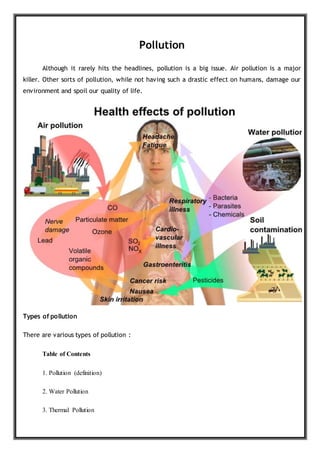The document discusses various types of pollution including air, water, noise, land, radioactive and thermal pollution. It provides definitions of each type of pollution, discusses their causes and effects. For each type of pollution, it also suggests ways to prevent or reduce pollution, such as using less fossil fuels, properly disposing of waste, and enforcing noise control regulations.
















